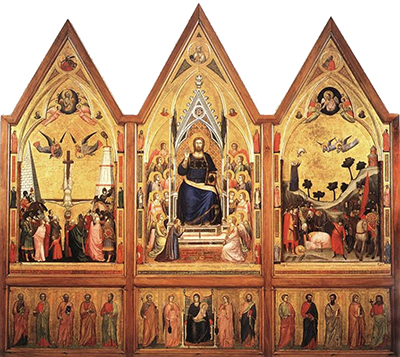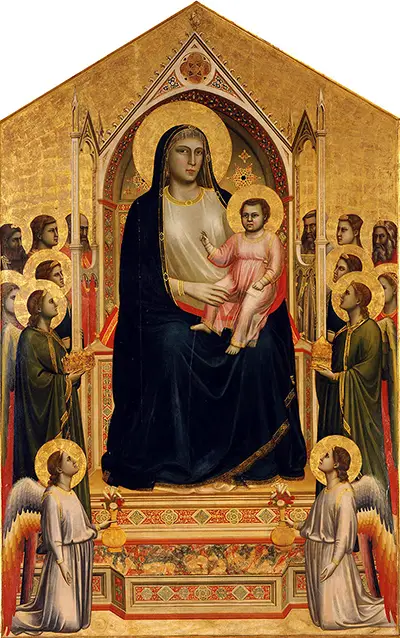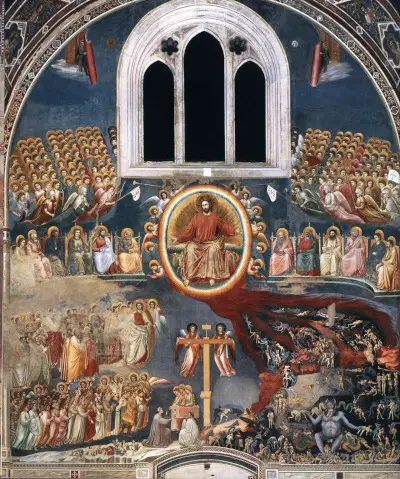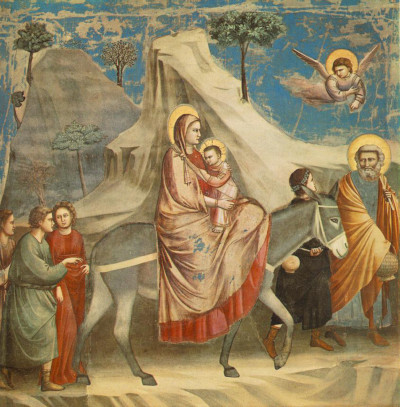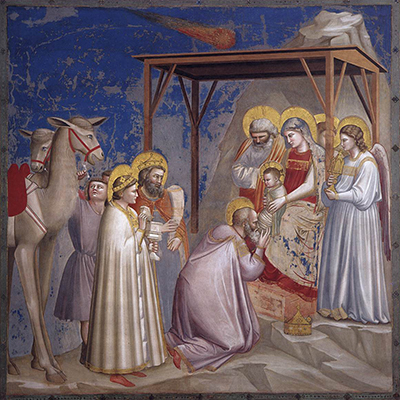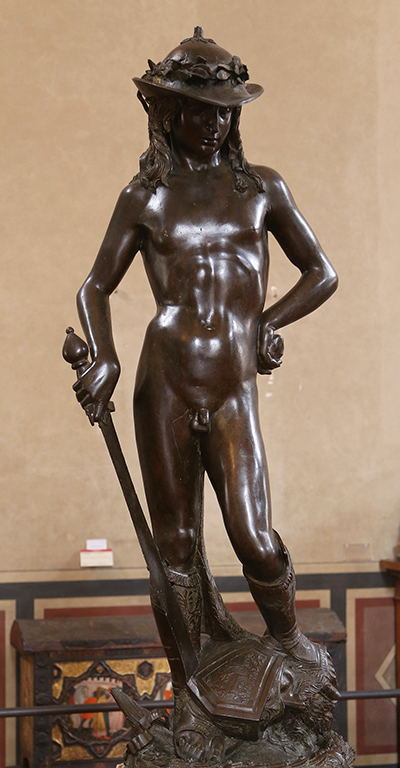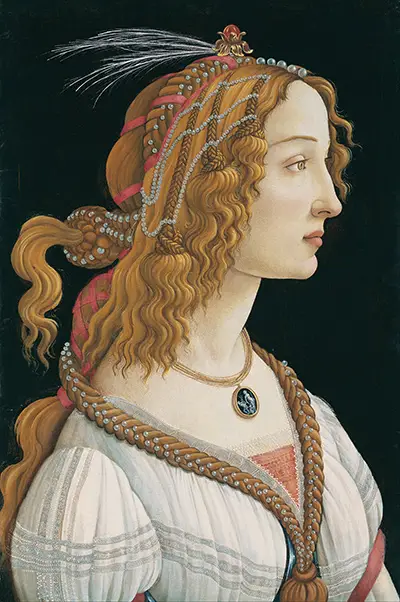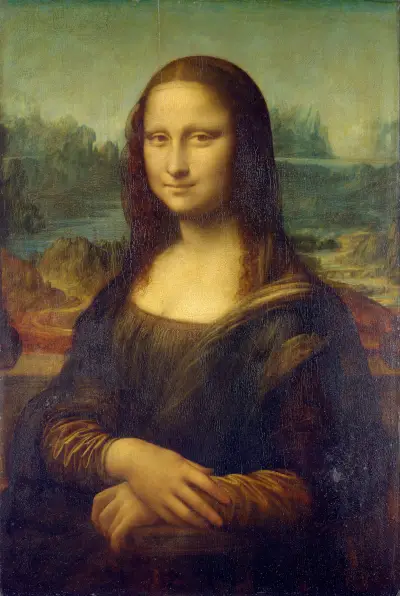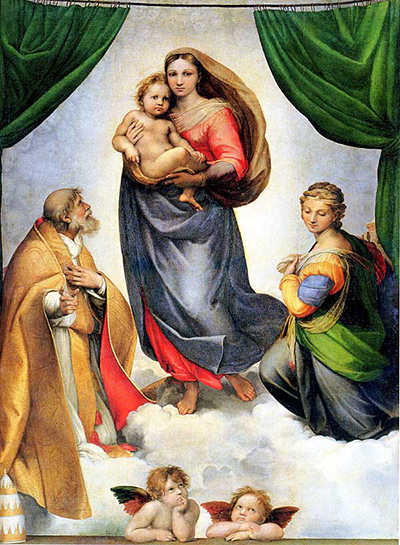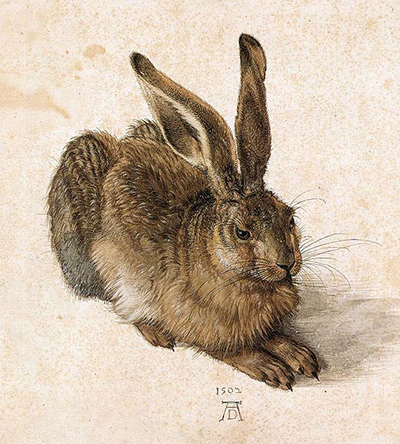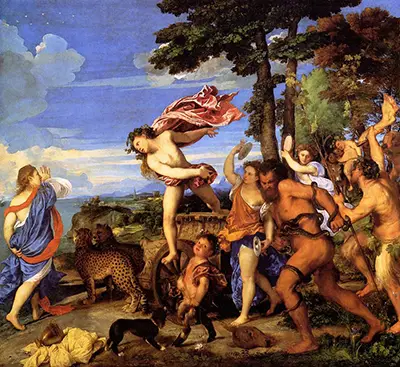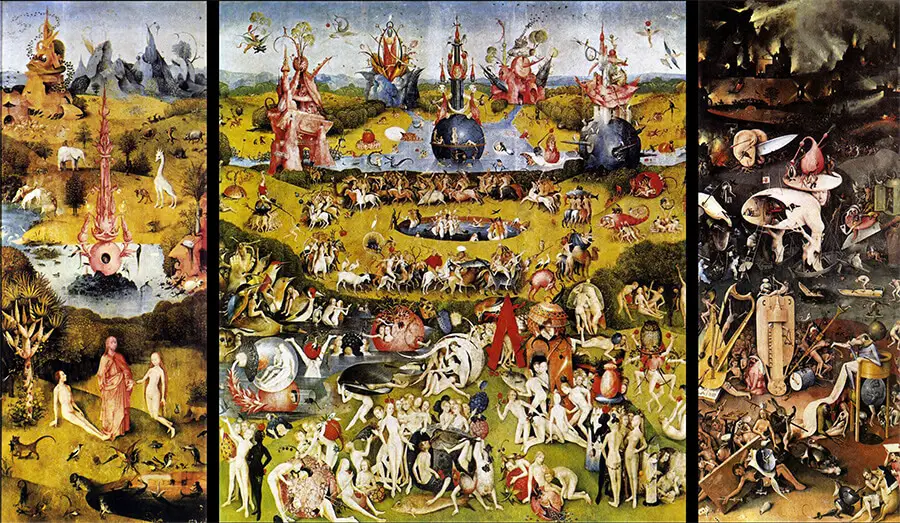This fresco of the Nativity is one of Giotto's most significant works, both among his paintings that sought to depict the life of the Virgin Mary, but also in its innovative style.
Introduction
Part of a series in Padua's Scrovegni Chapel, and his first mature work, the cycle is considered to be one of the greatest achievements in Western art. The frescoes fill the chapel, forming a narrative.
The series was commissioned around 1305 by his patron Enrico degli Scrovegni, to serve as a place of worship and a final resting place for the family, although it wasn't their parish church.
It may also have been an act of atonement for Enrico, who was a moneylender or usurer, with a father who featured in Dante's Seventh Circle of Hell. The chapel and monastery are now part of the city's museum.
Nativity was part of Giotto's most influential work, as he started to develop beyond stylised Byzantine formality.
He was beginning to produce more natural and realistic paintings, with folds of flowing robes, three-dimensional shapes, and figures that faced away from the viewer to create more space. He wanted his subjects to have movement and life, so that onlookers felt a connection and involvement with what they were looking at.
Giotto also altered the traditional group of animals in this Nativity, adding an ox and an ass, with the former perhaps representing the New Testament, while the ass might signify the Old Testament.
It could also be said to represent a contrast between those who stuck to the old beliefs, and those who embraced the changes that came with Christ and Christianity.
The overall cycle of work that Giotto produced in the chapel ran into the many dozens of artworks. He called upon the assistance of 40 artists to help out with the completion of this project and would have had to work quickly because of the nature of fresco painting.
The Nativity, Birth of Christ has become known as one of the most respected items from this series, with other notable artworks to be found here including the likes of Lamentation, The Last Judgement and The Arrest of Christ (Kiss of Judas).
It was a huge undertaking but the confident artist knew that he could direct others for much of the work, leaving him time to concentrate on the initial designs as well as the more important parts of each composition.
Their achievements are still lauded today, with the chapel remaining a popular stop off for many Italian art trips organised for international travellers.
video
Table of Contents
- Giotto's Interpretation of The Nativity
- What Techniques did the Artist use?
- How Long did the Giotto Fresco Cycle take to Complete?
- Did Giotto produce any other Nativity Paintings?
- The Artist's Background and Legacy
- Where can The Nativity (Birth of Jesus) be Found Today?
- Which other Artists have Featured the Nativity within their Paintings?
- How have the Interpretations of the Nativity varied across different Artistic Movements and Periods?
- Which Paintings may have Inspired Giotto di Bondone's Nativity (Birth of Jesus)?
- Large Image of The Nativity (Birth of Jesus)
Giotto's Interpretation of The Nativity
Giotto's treatment of this event as a drama between mother and baby is another innovation, where emotion is conveyed, unlike in the more formal Byzantine paintings that Giotto was familiar with.
It's possible here to discern a sadness in Mary when she gazes at Jesus, as if aware that she will lose him one day. In Byzantine art, the birth of Christ traditionally took place in a cave, but Giotto places his Nativity in a shed, with livestock that eat, breathe and move like real farm animals that have wandered in for warmth and food.
The artist took a supervisory role in some of the artworks, designing all of the initial content and then overseeing the work of others to implement it. He would ensure that a consistent approach was carried out across the full cycle of paintings.
What Techniques did the Artist use?
Giotto was entirely comfortable in working with tempera or fresco techniques, and would choose between them depending on the requirements of each project.
His series of frescoes within the Padua chapel would require the use of the latter, where fast drying plaster would react against the artist's work to create each design. The method used meant that the artists would only have a short window in which to complete their painting, with Giotto overseeing the progress of each assistant.
He would construct drawings initially to lay out each piece and then call upon his skilled helpers to implement each design themselves. Giotto kept a close eye on proceedings in order to ensure a consistent body of work was delivered by the end of the project.
He would be clear on the types of materials used, for example, so that colours were consistent from one iteration to the next.
How Long did the Giotto Fresco Cycle take to Complete?
The artist worked on this series of frescoes between the years of 1304-1306. The project would have taken much longer were it not for the support of a large number of assistants, who took Giotto's lead and implemented his designs one at a time.
With plaster drying quickly, each design had only a short window in which it had to be painted, increasing the need for helpers. The topics covered were related to scenes from the life of Joachim, the Virgin and Christ, with Last Judgment then being added within the chapel too.
Giotto would travel around Italy frequently in order to complete various commissions, but was relatively new to Padua at the time of this large project. He would also complete work in Assisi, Rome, Florence and more, with his artistic reputation becoming particularly strong once his career had truly taken off.
His willingness to travel certainly enabled him to take on more work and increase the number of opportunities that came his way.
Did Giotto produce any other Nativity Paintings?
Giotto di Bondone would return to the theme of The Nativity in c.1311 - c.1320 for a project within the Basilica of Saint Francis of Assisi. Natività, therefore, takes inspiration from the artist's earlier work in the Padua chapel and makes some adjustments to produce this new iteration.
The layout for his follow up piece is fairly similar, featuring the same angle of architecture in which the main figures are placed. There is also the landscape touches and supporting figures found in the earlier piece, though with postures and angles altered.
Through good fortune, the Assisi version remains in better condition today, with many of the original colours still visible and clear. The artist would re-visit other key themes in this manner throughout his career, including the Crucifixion, Madonna and Child and also The Adoration of the Magi.
The Artist's Background and Legacy
Giotto di Bondone may or may not have been born a Florentine, but some reports claim that he was discovered by the artist Cimabue while working in the Tuscan countryside, and taken to Florence as an apprentice.
In any case, whether the young, untrained painter was formally or informally schooled in the Byzantine style, he produced sublime art in that tradition. However, when he moved beyond that to experiment with a completely new way of portraying people and events, it changed the way in which painters viewed and interpreted subjects forever.
This revolutionary approach continued its influence into the period of the Renaissance, and to other great artists such as Raphael, Michelangelo and Masaccio, reaching down the centuries to today. Giotto's Nativity and the rest of his frescoes in the Scrovegni Chapel started art lovers on that journey.
Where can The Nativity (Birth of Jesus) be Found Today?
The artwork can be found in its original position in Padua's Scrovegni Chapel. The Nativity of Jesus sits in the middle tier of the south wall and is accompanied by The Adoration of the Magi, The Presentation of Jesus at the Temple, The Flight into Egypt and The Massacre of the Innocents.
The chapel itself features on many Italian art tours for both domestic and international tourists and is relatively close to the city of Venice for those looking to discover some of the true cultural gems of this country.
UNESCO have promoted this location in recent years too, bringing it an even greater prominence but efforts have been continually made to protect Giotto's work from the constant stream of tourists who continue to flock to this historical, stunning location which offers much both in terms of painting and also architecture.
Which other Artists have Featured the Nativity within their Paintings?
This critical Christian theme derives directly from the biblical gospels of Luke and Matthew. It would become one of the most reproduced items from the Bible in western art. Some of the most famous names to have covered it at least once include the likes of Sandro Botticelli with Nativity of Jesus from circa 1473–1475.
It has been seen most within Italian and North European art, with other examples including Nativity with St. Francis and St. Lawrence by Caravaggio, Adoration of the Christ Child by Gerard van Honthorst and also another interpretation by Petrus Christus.
Each generation of artist would take what had gone before and then add their own technical and compositional innovations on top, just as been the case leading into the Proto Renaissance in which Giotto would bring his own ideas, such as a deeper perspective and greater use of emotion.
How have the Interpretations of the Nativity varied across different Artistic Movements and Periods?
Some of the earliest Nativity paintings that have been uncovered date back to the 9th century, with their style being rather different to that employed here by Giotto. He would bring much more depth to the painting, though the same figures would appear as before.
It was only later that painters started to work more freely in how they handled this topic, which reflects a wider movement towards free expression. Paul Gauguin, for example, offers a great contrast in how he presented the content without any of the divinity, but rather a fairly normal every day scene.
The Baroque era would provide drama and exquisite detail within their own interpretations, but after that religious art would be much less common and so depictions of the Nativity were not embraced so much.
In today's contemporary world we see all manner of alternative approaches, though few have anything like the same level of precision and technical mastery as that displayed by the likes of Giotto.
Which Paintings may have Inspired Giotto di Bondone's Nativity (Birth of Jesus)?
We do know that the artist is likely to have learnt his trade under Cimabue. His influence, and specifically the use of gold paint, continued into Giotto's career.
The teacher was famous for more of a two-dimensional approach, though, which his student moved away from and so it would be wrong to ignore the many innovations brought about by Giotto himself. We also know that Giotto travelled around Italy frequently, and he would have come across a great amount of art from previous centuries in doing so.
Some of these artworks may have come from anonymous artists, and might not even exist today, making it hard to point at elements of Giotto's methods and confidently attribute them to earlier painters.
Indeed, a large amount of his own work still holds controversy over its attribution, though there can be no doubt as to the role he played in delivering the breaktaking display which can still be found in the Padua chapel today.
Large Image of The Nativity (Birth of Jesus)
 in Detail Giotto.jpg) The Nativity (Birth of Jesus) in Detail Giotto
The Nativity (Birth of Jesus) in Detail Giotto
More Renaissance Artists



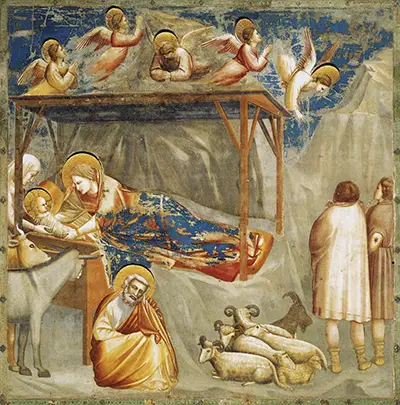
 Giotto.jpg)
 Giotto.jpg)
